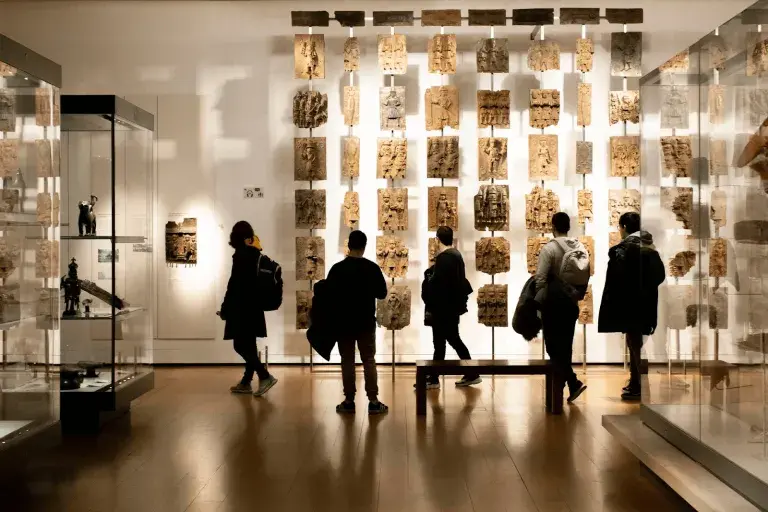3 Record-Breaking Fabergé Egg Auctions From Across the Industry

What is a Fabergé egg?
Fabergé eggs refer to a series of 50 objets d’art created by Russian jewelry house Fabergé for the Romanov imperial family. In 1885, Tsar Alexander III commissioned an Easter egg from the company as a gift to his wife. Tsar Alexander III became so enamored with them that he insisted on giving one to his wife every Easter until he died in 1894. His son, Tsar Nicholas II, kept the House of Fabergé busy crafting eggs for both his mother and wife. That all came to an abrupt end with the Russian Revolution of 1917, the royal family’s execution, and many of the Fabergé eggs moving to the Moscow Kremlin Armoury.
How much are Fabergé eggs worth?
A century later, Fabergé egg auctions now inspire spirited bidding given the pieces’ scarcity and the stories behind them. Original Fabergé eggs regularly fetch millions of dollars at auction. Those interested in more contemporary examples can shop directly through Fabergé’s website. Auction Daily takes a look back at three of the most expensive Fabergé eggs to hit the market.

Image from The Jewelry Editor.
The Fabergé Winter Egg at Christie’s, 2002
Empress Maria Feodorovna received the first Fabergé egg shortly after Easter in 1885. The tsarina was so impressed by this egg, now known to aficionados as the First Hen Egg, that it became an Easter Sunday staple. Her son, Tsar Nicholas II, continued the tradition, giving Feodorovna several of these pieces, including the Winter Egg in 1913. Almost 90 years later, Christie’s brought this Fabergé egg to auction.
Three thousand diamonds cross the exterior of the Winter Egg in a snowflake-like pattern. The tsarina would have opened the piece to discover a surprise bouquet of flowers crafted with white quartz and gold wire. The gift served as an elaborate reminder of the changing seasons, from the chills of winter to spring flowers.
Christie’s offered the Winter Egg with an estimate of USD 4 million to $6 million. However, when the bidding war ended, it sold for over $9.5 million to an anonymous phone bidder. “I was expecting a good price but not such a good price,” admitted Alexis de Tiesenhausen of Christie’s Russian Department. The lot set a new record for Fabergé eggs at auction.
Facts about Fabergé eggs: Tsar Alexander III and Tsar Nicholas II commissioned 50 of these eggs, collectively referred to as the Tsar Imperial eggs. That includes two pieces that were commissioned but never delivered in 1917 due to the Russian Revolution. The House of Fabergé still invoiced the dethroned king for one of the eggs.
Third Imperial Easter Egg, Next to a Dunkin’ Donuts, 2014
In 2004, at a flea market somewhere in the Midwestern United States, a scrap metal dealer bought an intricate decorative art piece for its gold and gems. The dealer spent around $13,000 on it and left it lying around their house for nearly a decade.
It wasn’t until they ran a Google search in 2012 that the scrap dealer realized they owned the missing Third Imperial Easter Egg. Tsar Alexander III gave this Fabergé egg to his wife in 1887, and experts were under the impression it was lost to time.

Wartski jewelers came to inspect the piece. The firm was stunned at the Third Imperial Egg’s unassuming surroundings. The scrap dealer’s house was “next to a highway and a Dunkin’ Donuts. There was the egg, next to some cupcakes on the kitchen counter.”
It’s unclear how much the Third Imperial Easter Egg sold for at auction in 2014. However, experts put the value as high as $33 million. They also seem to agree that it is unlikely to return to public view. “It is a time capsule that we will never, ever see again,” jewelry historian Joanna Hardy told the BBC.
Facts about Fabergé eggs: Not all of these pieces were made for the Russian royal family. Eventually, a few aristocrats had the opportunity to celebrate special events with a Fabergé egg, just like a tsar. The most well-known example is Alexander Ferdinandovich Kelch, who acquired seven eggs for his first wife. A few decades later, Kelch lost his wealth and disappeared in Siberia during the purges of Joseph Stalin.
The Rothschild Fabergé Egg Auction at Christie’s, 2007
Five years after setting the record for a Fabergé egg price at auction, Christie’s returned to top it. Before the 2007 sale, experts did not know that the Rothschild Fabergé Egg existed. Because of this, Christie’s got to name the piece itself. Christie’s is the only auction house to have the honor of naming a Fabergé egg.

The Rothschild Fabergé Egg was presented to Germaine Alice Halphen to commemorate her engagement to a member of the Rothschild family. The surprise included in this pink egg is a rooster with rose-cut diamonds. The bird emerges from the top of the Fabergé egg at the start of every hour.
After ten minutes of bidding, the egg sold for GBP 8.98 million (USD 12.6 million), just short of the GBP 9 million high estimate. The result was still enough to break the auction record for a Fabergé egg price. It also set a new high for timepieces at auction, as well as Russian art objects.
Want to learn more about record-breaking lots? Auction Daily recently revisited Keith Haring’s legacy and history at auction.









